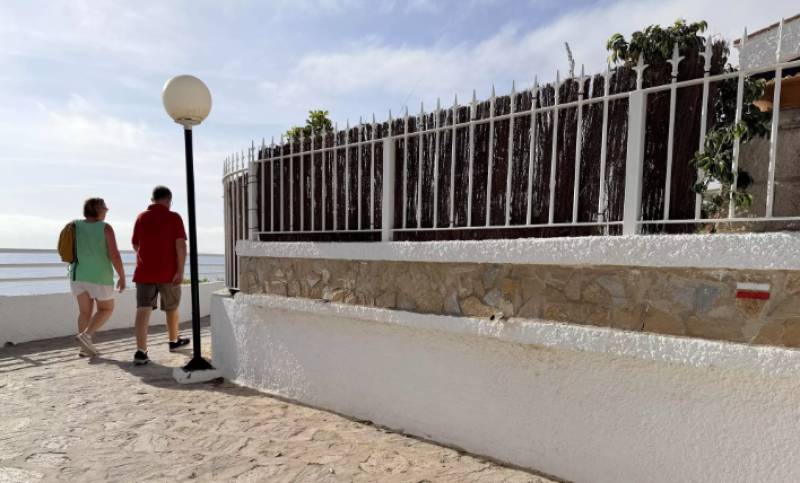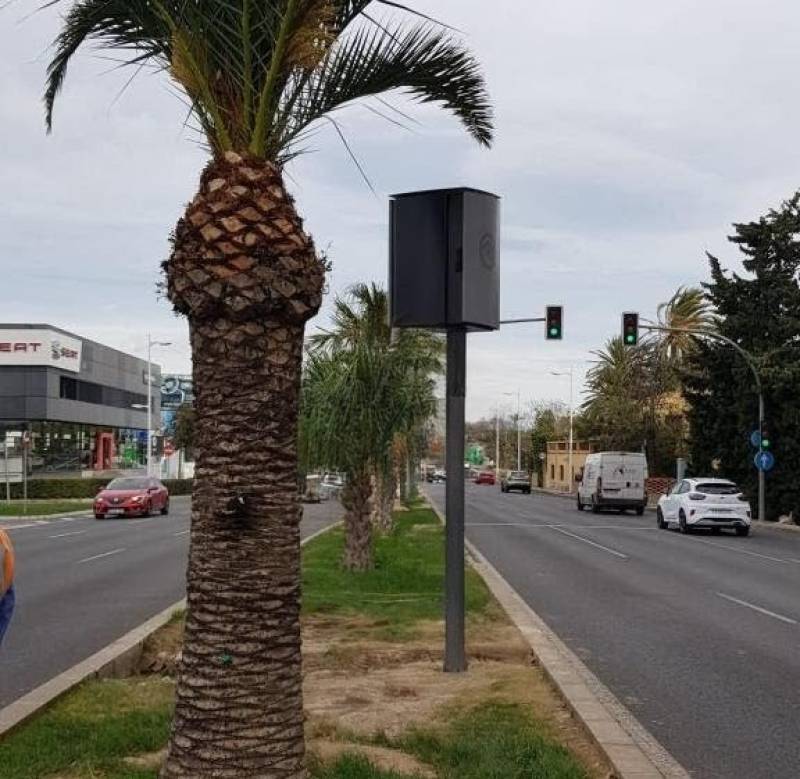

Guidelines for submitting articles to Las Terrazas Golf Resort Today
Hello, and thank you for choosing El Valle Today.com to publicise your organisation’s info or event.
Las Terrazas Golf Resort Today is a website set up by Murcia Today specifically for residents of the urbanisation in Southwest Murcia, providing news and information on what’s happening in the local area, which is the largest English-speaking expat area in the Region of Murcia.
When submitting text to be included on Las Terrazas Golf Resort Today, please abide by the following guidelines so we can upload your article as swiftly as possible:
Send an email to editor@spaintodayonline.com or contact@murciatoday.com
Attach the information in a Word Document or Google Doc
Include all relevant points, including:
Who is the organisation running the event?
Where is it happening?
When?
How much does it cost?
Is it necessary to book beforehand, or can people just show up on the day?
…but try not to exceed 300 words
Also attach a photo to illustrate your article, no more than 100kb

La Diablesa by Nicolás de Bussy, Orihuela
This sculpture was produced in 1695 and still parades in the Semana Santa processions
“La Diablesa” or “El Triunfo de la Cruz”, was produced by Nicolás de Bussy in around 1695. De Bussy was  from Strasbourg, but settled in the south-east of Spain, and most of his surviving works are to be found in the provinces of Murcia and Alicante.
from Strasbourg, but settled in the south-east of Spain, and most of his surviving works are to be found in the provinces of Murcia and Alicante.
“La Diablesa” is an extraordinary piece, and is unique in Spain, showing the devil in female form, La Diablesa, meaning she-devil.
The piece is imbued with Baroque imagery, and portrays the skeleton of death interlocked what that of the 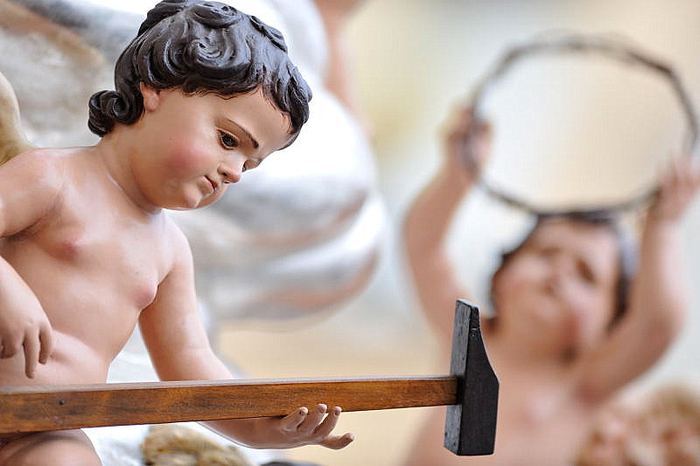 devil in female form, surmounted by a whirl of cloud, angels and the triumph of the holy cross above them.
devil in female form, surmounted by a whirl of cloud, angels and the triumph of the holy cross above them.
The piece shows how faith can overcome the evil intents of the Devil, and explores the theme of good fighting evil, abstinence fighting temptation, God fighting Satan and the never ending variations on the theme of good versus evil.
It must be remembered that when this sculpture was created in the 17th century, most of the population were illiterate, and pieces like this were important to show the triumph of everlasting life over death and of good 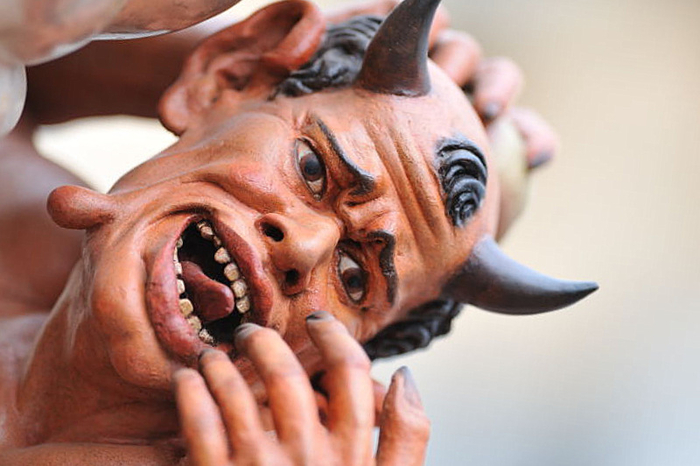 over evil in the most visible way possible, glorifying the power of the cross and giving an illiterate population a focal point for worship as well as engendering respect for the power of the church.
over evil in the most visible way possible, glorifying the power of the cross and giving an illiterate population a focal point for worship as well as engendering respect for the power of the church.
The glory of this piece is in the detail, the silken folds of the clouds, the muscles on the body of the she devil, the apple of temptation clenched in a gnarled fist, the symbols of Christianity tucked in amongst the clouds. Religious art tends in the minds of many to become stereotyped, but a visit to the archaeological museum would be worthwhile even if this were the only item in it, and it leaves the visitor lamenting the fact that so many of De Bussy’s works were lost or destroyed during the months of turbulence leading up to the Spanish Civil War.
This sculpture still plays an important role in the Semana Santa parades in Orihuela, and is carried through  the streets during the procession of the Santo Entierro del Cristo on the evening of Holy Saturday, accompanied by the Mayors of the rural districts of Orihuela.
the streets during the procession of the Santo Entierro del Cristo on the evening of Holy Saturday, accompanied by the Mayors of the rural districts of Orihuela.
Traditionally La Diablesa is also preceded by torchbearers, who again, are mainly from the rural pedanías of the municipality, the whole procession headed up by the Caballero Cubierto, the only man in Orihuela who is allowed to keep his hat on when entering the Cathedral. This parade splits in two: the Caballero Cubierto leading the main body of the procession into the Cathedral, while La Diablesa is denied entry, as no representations of the devil are permitted inside Spanish churches, and must wait outside, rejoining the procession at the far end of the Cathedral.
La Diablesa is also the subject of an ongoing court battle between the Town Hall and the Chapter of the 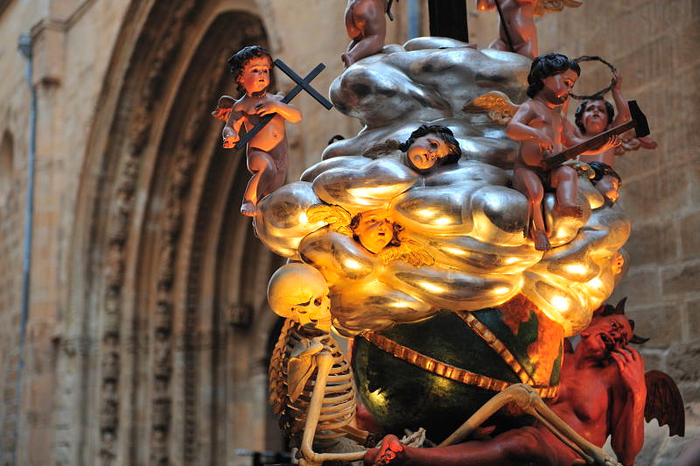 Cathedral who run the Museum of Sacred Art, opposite the cathedral , over the actual ownership of the sculpture and where it should be located.
Cathedral who run the Museum of Sacred Art, opposite the cathedral , over the actual ownership of the sculpture and where it should be located.
Currently the council has the upper hand and the piece is the star attraction of the archaeological museum, although there is a possibility that it may return to the sacred art museum in the future.
To see La Diablesa in situ, visit the Municipal Archaeological Museum, Orihuela









